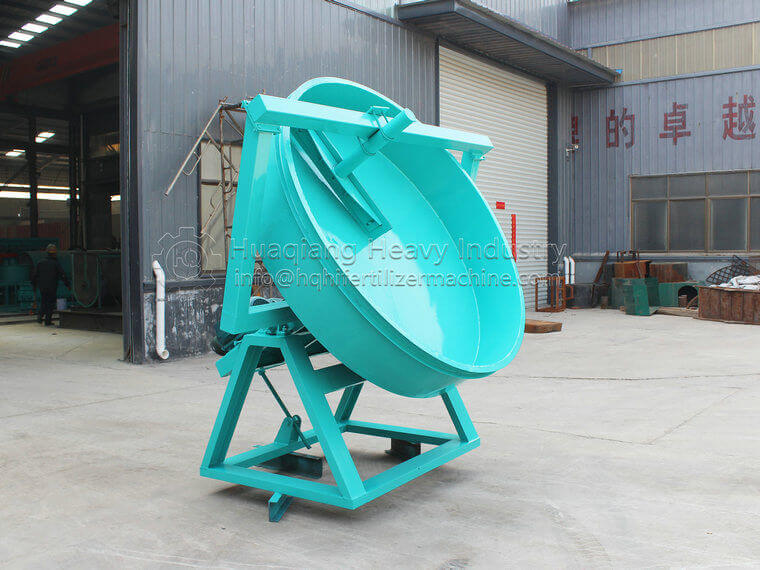There are various types of NPK fertilizer granulators, each with its unique working principle, structural characteristics, and applicable range. Here are several common types of NPK fertilizer granulators that are introduced in detail:

Working principle: By rotating a tilted disk, the material is rolled inside the disk using the combined effect of centrifugal force, friction force, and gravity. At the same time, spraying adhesive promotes the aggregation and growth of material particles, ultimately forming circular particles that roll down from the edge of the disc.
Structural features: mainly composed of a circular large plate, a driving device, a spraying system, etc. The large plate is usually made of high-strength steel, and the driving device ensures stable rotation of the disc. The spraying system accurately sprays the adhesive.
Scope of application: Suitable for the production of NPK fertilizers with high requirements for particle roundness and relatively small scale. Commonly used in the production of specialized fertilizers for some economic crops. Its advantages are good particle appearance, simple operation, and strong adaptability; The disadvantage is that the production efficiency is relatively low, and there may be a sticking phenomenon when processing highly viscous raw materials.
Working principle: The drum rotates under the drive of the transmission device, and the internal plate picks up and spills the material, making it in a fluidized state. The spraying system sprays adhesive and moisture onto the material, and the material aggregates into particles through collision and friction, and is discharged from the discharge end.
Structural features: It consists of a horizontal cylindrical drum, transmission device, feeding system, spraying system, and discharging system. The drum has a large capacity to handle a large amount of materials.
Scope of application: Widely used in large-scale industrial production of NPK fertilizers. Capable of processing various formulas and properties of raw materials, producing particles that are uniform and of moderate strength. However, the equipment operates with noise and dust, resulting in relatively high energy consumption.
extruder
Working principle: The feeding system sends the raw materials into the screw extruder, and the screw rotates to apply extrusion pressure. The raw materials are extruded into strips through the small holes of the template, and then cut by the cutter to the set length to form particles.
Structural features: including feeding system, screw extruder, template, and cutting blade components. The core screw extruder generates strong extrusion force on the raw materials.
Scope of application: Suitable for producing NPK fertilizers with high particle strength requirements and no need to add binders, such as some special fertilizers. The advantages are high particle strength and wide adaptability to raw materials; The disadvantage is that the equipment wears out quickly, the maintenance cost is high, and the production efficiency is relatively low.